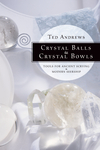Samhain: A Powerful Time for Divination

Halloween, All-hallow-even, All Hallow’s Eve, Samhain, and All Saints’ Eve are just a few of the names given to celebrations occurring on October 31st. Although they all share similarities in their festivities, I am going to focus on some of the Celtic customs related to Samhain.
Samhain begins at dusk on October 31st and is the Celtic New Year’s Eve. The god of summer is defeated and the god of winter and death now presides over mother earth. This is a special day, the time of year when the veil between the world of the living and the dead is the thinnest, and a time when the communication between these worlds is the strongest. This has its good and bad points, depending on if the visiting spirits are welcome or not!
When inviting loved ones home that usually reside in the Otherworld, it is customary to either set an empty place at the table with food and drink for deceased relatives or leave it outside for any traveling souls returning to the places they once lived. The belief is that the souls nourish themselves on the soul of the food provided. Bonfires (from the English bone-fires) were lit, allowing the dead a place to warm themselves by. Doors, windows, and gates were unlocked to make sure their long-awaited guests knew they were welcome. Jack-o’-lanterns (originally carved turnips) were prominently displayed to protect the living and scare away evil spirits. The carvings depicted protective guardians living in the spirit world.
Samhain is also a time when the ordinary rules of society don’t pertain, challenging the established order and introducing chaos. People dress up in costumes switching conventional gender roles, wear masks that emulate spirits or departed ancestors, and both worlds celebrate together.
During this transformational period between light and dark, and life and death, there is an opening—a pause in time when magic is believed to be at its strongest, making it a perfect time for divination and seeing what the next year holds. It’s a great time to expand your intuitive skills. You could plan your own divination party and give yourself a “New Year’s” reading to boot. Llewellyn has a variety of books and products on the different forms of divination.
A great tarot deck to add to your collection and especially appropriate for Halloween (with more skeletons than you can count) is Tarot of the Dead by Monica Knighton. This Otherworld-friendly deck uses Pens for Wands, Coffins for Cups, Pistols for Swords, and Reels for Pentacles.
At the beginning of November, Mexico celebrates “Day of the Dead,” or Dia de los Muertos. While the specific dates and observances vary depending on the region, the core of the holiday is the same—to honor family and friends who have died. Cemeteries and homes are decorated with flowers, and offering tables are laid out with gifts of food, clothing and anything the loved one enjoyed in life. Some believe this is a time set aside for remembrance, while others believe that the dead literally return in spirit for a visit, communing with the family and enjoying the essence of the offerings left for them.
However you choose to spend this day, make it a celebration and remembrance of past, present and future love. Take time to stop and honor the sacredness of all your relationships, with special focus on those we can no longer touch. May all your readings be good ones.
Diversity of Divination
In actuality, divination can involve any method by which events are interpreted and/or explained. Divination is more than foretelling the future. It does involve prediction, but it can also involve divining some truth or interpreting omens and signs as part of its practice. Divination often incorporates methods by which events are interpreted and explained. The most commonly recognized tools and methods in our modern society are runes, tarot, astrology, dreams, and the I Ching. Many strange and unusual methods of divination have been employed, from the reading of entrails to the study of cloud formations.
- Aeromancy: The casting of dirt or sand into the wind to determine answers by the direction the wind takes it.
- Apantomancy: Observing objects that appear haphazardly.
- Belomancy: Divination by the flight of arrows.
- Bibliomancy: Consulting a passage or line in a book at random.
- Catoptromancy: Divination through a lens or a magic mirror.
- Ceromancy: Dropping melted wax into water and observing results.
- Chiromancy: Divination by the lines of the hand.
- Crystalomancy: Divination by clear globe, pool of water, mirror, or transparent object.
- Geloscopy: Interpretation of a person’s laughter.
- Gyromancy: Spinning and falling to the ground, leading to oracles.
- Hepatoscopy: Observation of a sheep’s liver.
- Myomancy: Divination by studying the entrails or the movements of rodents.
- Oenisticy: Divination by studying the flight of birds.
- Onomancy: Divination by rearranging the letters in a name.
- Ooscopy: Using an egg to determine the sex of an unborn child.
- Phrenology: Studying the bumps and contours of the head.
- Physiognomy: The study of human facial features. Pyromancy: Divination by smoke and fire.
- Tasseography: The reading of tea leaves and their shapes.
- Xylomancy: Observation of the position of twigs on the ground.
Excerpt is from Crystal Balls & Crystal Bowls by Ted Andrews
Related Products



is subject to certain Terms and Conditions